Coconut Farming: A Comprehensive Guide.
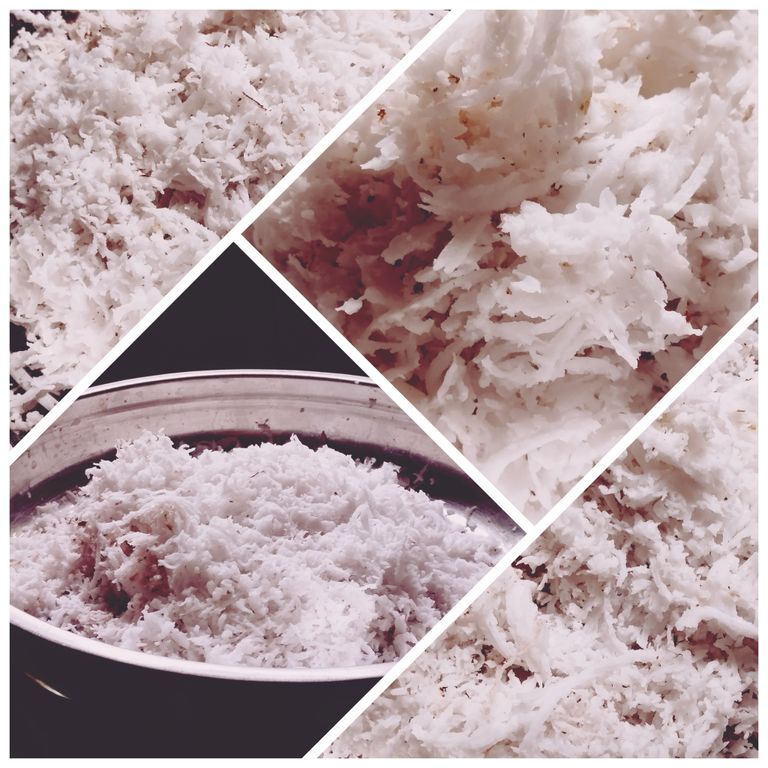
Introduction
Coconut, often referred to as the "Tree of Life," plays a vital role in tropical agriculture due to its versatility. Its economic importance spans several industries, from food and cosmetics to construction and energy production. The coconut tree (Cocos nucifera) thrives in coastal regions, but with proper care and favorable conditions, it can grow in various climates. In this blog, we will explore the methods, benefits, and challenges of coconut farming, along with detailed insights into the process.
Understanding the Coconut Tree
Botanical Overview
Coconut trees belong to the Arecaceae family and are characterized by their tall, slender trunks and feathery leaves. These trees can reach heights of 60-100 feet and have a lifespan of up to 60 years, although they can continue producing nuts for over 80 years with proper care. The fruit, commonly known as the coconut, has several layers, including the outer husk (exocarp), fibrous middle layer (mesocarp), and hard inner shell (endocarp) that encloses the seed or coconut meat (endosperm).
Types of Coconuts
There are two primary varieties of coconut trees:
- Tall Varieties: These trees grow to a significant height and begin bearing fruit after 6-10 years. They are the most common and can produce coconuts for up to 70 years.
- Dwarf Varieties: These are smaller, mature earlier (3-5 years), and have a shorter lifespan of about 40-50 years. Dwarf varieties are often preferred for commercial farming because of their faster yield.
Ideal Conditions for Coconut Farming
Climate Requirements
Coconut trees thrive in tropical and subtropical climates. Ideal conditions include:
- Temperature: 27-30°C (81-86°F) is optimal for growth. Temperatures below 15°C (59°F) or above 40°C (104°F) can affect the tree’s health.
- Rainfall: Coconuts require well-distributed rainfall ranging from 1000 to 3000 mm annually. Drought-prone areas may need supplementary irrigation.
- Sunlight: Coconut trees need a minimum of 2000 hours of sunshine per year for optimal growth.
- Humidity: High humidity levels of 70-80% are ideal, especially during flowering and fruiting stages.
Soil Preferences
Coconut trees prefer well-drained, sandy loam soil but can adapt to a variety of soil types as long as there is proper drainage. Soil salinity tolerance is an added advantage, making coastal areas ideal for coconut farming. The soil pH should be between 5.2 and 8.0, with a preference for slightly acidic to neutral conditions.
Steps in Coconut Farming
1. Land Preparation
Land preparation is crucial to ensuring healthy coconut growth. Start by clearing the land of weeds, stones, and debris. Plowing the soil will improve aeration and enhance water retention. In areas prone to waterlogging, proper drainage systems must be installed.
2. Selecting the Right Variety
Choosing the right variety depends on factors like climate, soil type, and market demand. If you're aiming for commercial farming, hybrid varieties might offer better yields. Tall varieties are suitable for long-term investments, while dwarf varieties provide quicker returns.
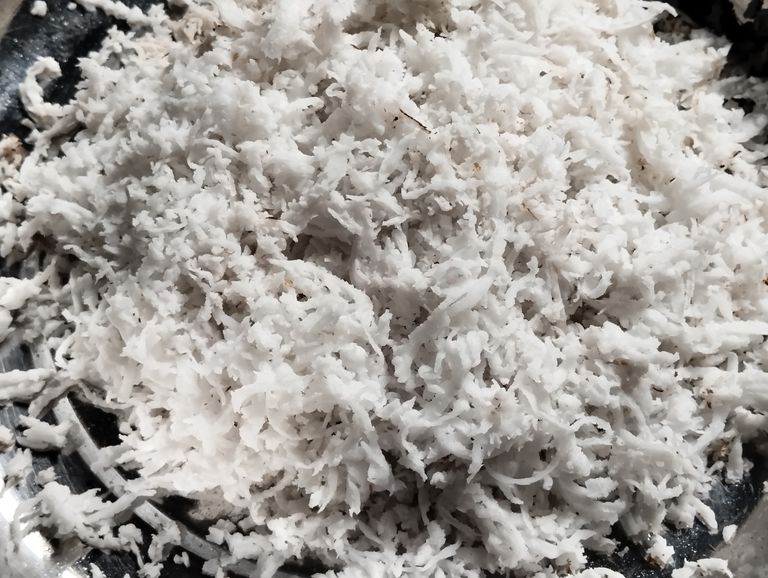
3. Planting
The ideal spacing for coconut trees is 7.5 to 9 meters between trees to allow proper growth and canopy spread. Before planting, dig pits of 1x1 meter, then fill them with a mixture of organic compost and soil. Seedlings or saplings (8-12 months old) are the best choice for planting. Ensure the root system is well developed before transplanting.
4. Irrigation
Although coconut trees are drought-tolerant, consistent irrigation during the first 5-7 years helps in establishing strong root systems. Drip irrigation or sprinklers are often used in modern coconut farms to ensure water reaches the roots efficiently, especially during dry spells.
5. Fertilization
Coconuts need a balanced nutrient supply. Organic manure, such as compost or cow dung, should be applied twice a year. Additionally, inorganic fertilizers like urea, superphosphate, and potassium chloride can be used to enhance growth and fruiting. The recommended annual dose per tree is 500 grams of nitrogen, 320 grams of phosphorus, and 1200 grams of potassium.
6. Pruning and Maintenance
Pruning coconut trees is necessary to remove dead or diseased leaves and ensure proper airflow around the canopy. Regular maintenance includes monitoring for pests and diseases and implementing control measures like biological pesticides or neem oil sprays.
Pest and Disease Management
Coconut trees are susceptible to several pests and diseases that can affect their health and productivity. Some common ones include:
Pests:
- Coconut Rhinoceros Beetle: This pest bores into the crown of the tree, causing damage to the growing point.
- Red Palm Weevil: The larvae of this beetle tunnel into the trunk, weakening the tree.
- Coconut Mite: These tiny pests feed on the tender tissues of young nuts, causing scarring.
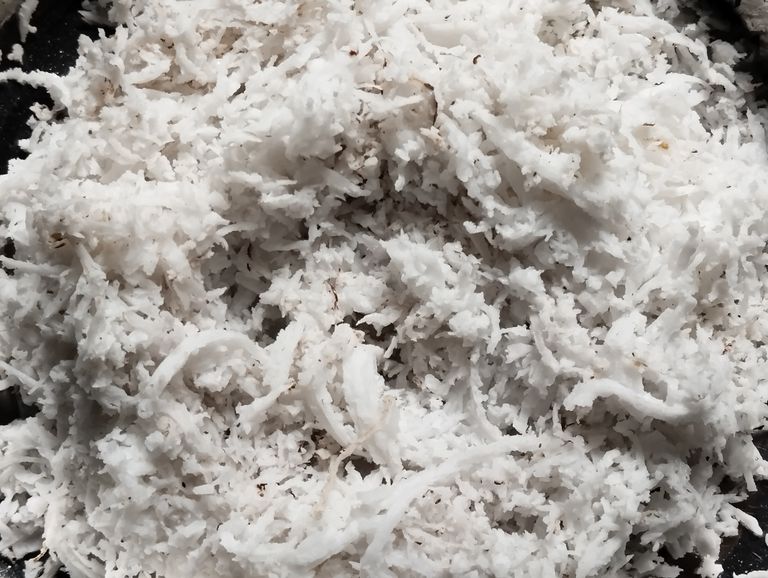
Coconut Tree Diseases: A Comprehensive Overview
The coconut tree (Cocos nucifera) is a tropical plant that has significant economic, cultural, and environmental importance in many parts of the world. Its fruit, the coconut, is a source of food, oil, fiber, and more. However, coconut trees are susceptible to various diseases that can severely impact their health, yield, and longevity. Understanding these diseases is essential for proper management and prevention. In this blog, we will explore the most common diseases affecting coconut trees, their symptoms, causes, and control measures.
1. Lethal Yellowing Disease
One of the most notorious diseases affecting coconut trees, lethal yellowing (LY) is caused by a phytoplasma, a type of bacteria that is transmitted by plant-sucking insects, primarily the planthopper Haplaxius crudus. This disease has devastated coconut plantations in parts of the Caribbean, Africa, and Latin America.
Symptoms:
- Premature drop of coconuts
- Yellowing of leaves, starting with the older leaves
- Blackening and withering of the inflorescence (flower cluster)
- Death of the tree within months
Control Measures:
- Resistant Varieties: Planting resistant varieties such as the Malayan dwarf or hybrid varieties has proven effective in managing LY.
- Removal of Infected Trees: Once a tree is infected, it should be removed promptly to prevent the spread to other healthy trees.
- Insect Control: Managing populations of the planthopper vector can reduce the transmission of the disease.
2. Bud Rot
Bud rot is a fungal disease caused by species like Phytophthora palmivora and Thielaviopsis paradoxa. This disease affects the apical bud (growing tip) of the coconut tree, which is crucial for the tree’s growth and development.
Symptoms:
- Wilting and yellowing of younger leaves
- Soft, mushy tissue around the apical bud
- Bad smell from the rotting tissue
- The eventual collapse of the central crown
Control Measures:
- Fungicide Treatment: Application of fungicides can help in the early stages of the infection.
- Sanitation: Remove dead or dying trees to prevent the spread of the pathogen.
- Resistant Varieties: Some coconut varieties show natural resistance to bud rot, and using these in plantations can help reduce losses.
3. Stem Bleeding Disease
Stem bleeding is a serious disease caused by the fungus Thielaviopsis paradoxa. It affects the trunk of the tree, causing a slow decline in health and productivity.
Symptoms:
- Dark, brownish-black liquid oozing from cracks in the trunk
- Formation of a hard crust at the bleeding site
- Gradual weakening of the tree, leading to a reduction in nut production
- In severe cases, the tree may die after several years of infection
Control Measures:
- Wound Dressing: The affected area should be cleaned, and a fungicidal paste should be applied to prevent further infection.
- Proper Irrigation: Overwatering or poor drainage can exacerbate the condition. Proper water management helps prevent the disease.
- Removal of Affected Tissue: Infected parts of the trunk should be removed to stop the spread of the fungus.
4. Leaf Spot Disease (Gray Leaf Spot)
Leaf spot, caused by the fungus Pestalotiopsis palmarum, is one of the most common diseases affecting coconut leaves. It usually occurs in areas with high humidity and frequent rainfall.
Symptoms:
- Circular, grayish spots on the leaves, sometimes with brown margins
- Gradual enlargement of the spots, leading to leaf blight
- Premature leaf drop in severe cases
Control Measures:
- Fungicide Application: Regular spraying of fungicides can help manage the disease, especially in the rainy season.
- Pruning: Remove and destroy infected leaves to prevent the spread of the fungus.
- Improved Air Circulation: Ensure adequate spacing between trees to reduce humidity and moisture buildup.
5. Root Wilt Disease
Root wilt is a devastating disease of coconut palms, particularly in India. Although the exact cause is unknown, it is believed to be associated with a combination of pests, pathogens, and environmental stressors.
Symptoms:
- Wilting and yellowing of leaves, particularly the older ones
- Stunted growth and reduced nut production
- Weak and shallow root system, leading to the tree’s eventual death
Control Measures:
- Good Cultural Practices: Proper irrigation, fertilization, and pest control can help reduce the incidence of root wilt.
- Intercropping: Growing compatible crops such as banana or pineapple can improve soil health and reduce disease pressure.
- Integrated Pest Management: Controlling pests like the rhinoceros beetle and red palm weevil, which may contribute to root wilt, is crucial.
6. Red Ring Disease
Red ring disease is caused by the nematode Bursaphelenchus cocophilus. It is transmitted by the palm weevil (Rhynchophorus palmarum), which causes extensive damage to coconut plantations in Latin America and the Caribbean.
Symptoms:
- Yellowing and wilting of leaves
- Formation of a characteristic red ring in the cross-section of the trunk, visible when the tree is cut
- Death of the tree within a few months if untreated
Control Measures:
- Insect Control: Managing palm weevil populations is critical in preventing the spread of red ring disease.
- Removal of Infected Trees: Infected trees should be removed and destroyed to prevent the nematodes from spreading to healthy palms.
- Biological Control: Introducing natural predators of the weevil, such as certain parasitic wasps, can help reduce infestation levels.
7. Ganoderma Wilt
Ganoderma wilt, caused by the fungus Ganoderma boninense, affects the roots and the base of the coconut tree, causing a gradual decline in the tree's health.
Symptoms:
- Rotting of the basal part of the trunk
- White fungal growth at the base of the tree
- Yellowing and wilting of leaves
- Death of the tree in advanced stages
Control Measures:
- Soil Treatment: Applying fungicides to the soil around the infected trees can help control the spread of the disease.
- Proper Drainage: Excess water can encourage fungal growth. Ensure proper drainage to keep the roots healthy.
- Removal of Infected Trees: Severely infected trees should be removed and destroyed to prevent the spread of the fungus.
8. Cadang-Cadang Disease
Cadang-cadang is a lethal disease caused by coconut cadang-cadang viroid (CCCVd). It primarily affects coconut palms in the Philippines but has also been reported in some other parts of Southeast Asia.
Symptoms:
- Yellowing of older leaves, followed by the younger leaves
- Stunted growth and reduced leaf size
- Premature nut fall and reduced fruit production
- Death of the tree after several years of infection
Control Measures:
- Quarantine Measures: Restricting the movement of infected palms and planting materials can help prevent the spread of the disease.
- Resistant Varieties: Research into resistant varieties is ongoing, and planting these varieties may offer long-term protection.
- Monitoring and Surveillance: Early detection through regular monitoring can help contain outbreaks.
Conclusion
Coconut trees are vulnerable to a variety of diseases, many of which can be managed or prevented with proper care and attention. Farmers and growers should adopt integrated disease management practices, including the use of resistant varieties, proper irrigation, and regular monitoring for early detection. By understanding these diseases and their control measures, coconut growers can ensure the health and productivity of their plantations for years to come.
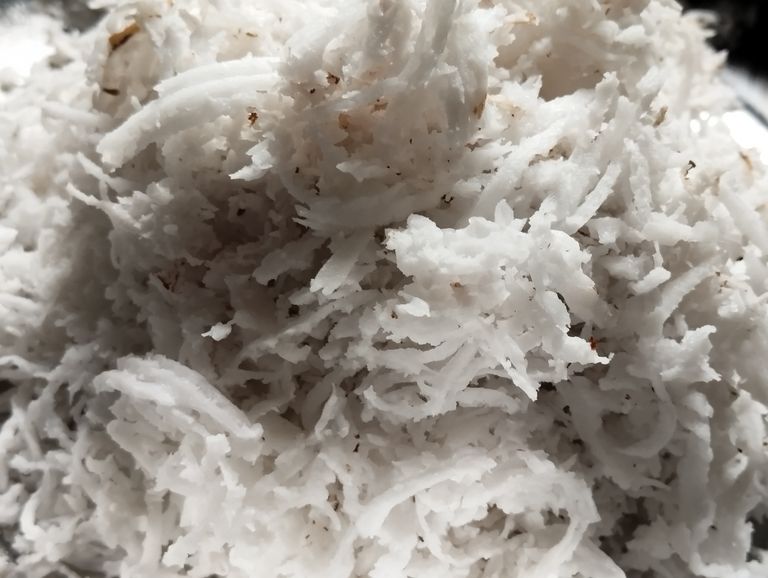
Coconut Oil: A Comprehensive Guide to Its Benefits and Uses
Coconut oil, derived from the kernel or meat of mature coconuts, has been used for thousands of years in various cultures for its wide range of applications. From cooking and cosmetics to traditional medicine, coconut oil plays an integral role in numerous aspects of daily life. In recent years, it has gained even more popularity in the West as health enthusiasts discover its many benefits. This blog will explore the composition, types, health benefits, and various uses of coconut oil, shedding light on why it remains one of the most versatile natural products available.
Composition of Coconut Oil
Coconut oil is composed primarily of saturated fats, but not all fats are created equal. The saturated fats in coconut oil are medium-chain triglycerides (MCTs), which metabolize differently than long-chain fatty acids found in many other foods. MCTs are easily absorbed by the body and are immediately converted into energy, rather than being stored as fat.
The key components of coconut oil include:
- Lauric Acid (50%): This fatty acid has antimicrobial and antibacterial properties, making it beneficial for boosting immunity and protecting against infections.
- Caprylic Acid (8%): Known for its antifungal properties, caprylic acid helps maintain a healthy balance of bacteria in the gut and skin.
- Capric Acid (7%): Like lauric and caprylic acid, capric acid has antimicrobial properties, further enhancing coconut oil’s ability to protect against harmful pathogens.
Types of Coconut Oil
There are two primary types of coconut oil, each with distinct processing methods and uses:
Virgin Coconut Oil: Extracted from fresh coconut meat, virgin coconut oil is considered the purest form. It undergoes minimal processing and retains its natural flavor, aroma, and nutritional properties. This type is preferred for skincare, haircare, and cooking, where a mild coconut flavor is desirable.
Refined Coconut Oil: This type of coconut oil is made from dried coconut meat, also known as copra. It is processed to remove impurities, which results in a neutral flavor and a higher smoke point, making it suitable for high-heat cooking. Refined coconut oil, however, may lose some of the beneficial compounds found in virgin coconut oil due to the processing.
Health Benefits of Coconut Oil
Boosts Heart Health
Though coconut oil is rich in saturated fats, several studies suggest that the MCTs found in coconut oil may help increase the levels of good HDL cholesterol. This improvement in HDL cholesterol may contribute to better heart health by promoting a healthy lipid profile. While more research is needed, many proponents believe that coconut oil can be a part of a heart-healthy diet when used in moderation.Aids in Weight Loss
One of the standout qualities of coconut oil is its ability to support weight loss. MCTs in coconut oil are easily converted into energy and are less likely to be stored as body fat. Studies have shown that MCTs may increase energy expenditure and help burn more calories. Additionally, coconut oil can help reduce appetite, allowing for better portion control and overall calorie intake reduction.Enhances Brain Function
Coconut oil is often touted for its potential to improve brain function, particularly in individuals with neurodegenerative conditions such as Alzheimer's disease. The MCTs in coconut oil are converted into ketones, which serve as an alternative energy source for the brain. Some studies have suggested that ketones may improve cognitive function and memory in those with Alzheimer’s.Supports Digestive Health
The antimicrobial properties of lauric and caprylic acids in coconut oil can help combat harmful bacteria, yeast, and parasites in the digestive tract. These properties promote a healthy balance of gut bacteria, potentially improving digestion and reducing symptoms of digestive disorders such as irritable bowel syndrome (IBS).Promotes Healthy Skin and Hair
Coconut oil is a popular ingredient in many skincare and haircare products. Its moisturizing and nourishing properties make it ideal for dry or damaged skin and hair. Coconut oil can also be used as a natural remedy for conditions like eczema, psoriasis, and dandruff. When applied to the skin, it helps to lock in moisture, reduce inflammation, and promote healing. Additionally, it can protect hair from damage and reduce protein loss when used before or after washing.
Cooking with Coconut Oil
Coconut oil is highly versatile in the kitchen, with its use ranging from frying and sautéing to baking and blending into smoothies. Virgin coconut oil imparts a mild coconut flavor to dishes, while refined coconut oil offers a neutral taste. One of the primary advantages of coconut oil is its high smoke point, which makes it suitable for high-heat cooking without breaking down into harmful compounds.
Some common uses of coconut oil in cooking include:
- Sautéing and Frying: With its stable composition, coconut oil is an excellent choice for stir-frying and deep-frying vegetables, meats, and seafood.
- Baking: Coconut oil can replace butter or other oils in baking, offering a healthier alternative while providing a subtle coconut flavor.
- Smoothies and Coffee: Adding a spoonful of coconut oil to smoothies or coffee can provide a quick energy boost and enhance the flavor of the drink.
- Spreads and Dressings: When used in combination with herbs and spices, coconut oil can create delicious salad dressings or spreads for bread and crackers.
Cosmetic Uses of Coconut Oil
Coconut oil's benefits extend far beyond cooking, as it is widely used in the cosmetic industry for its moisturizing and nourishing properties. Whether used on the skin or hair, coconut oil is an all-natural, chemical-free solution for maintaining beauty and wellness. Here are some popular cosmetic uses of coconut oil:
Skin Moisturizer: Coconut oil is a natural emollient, making it ideal for hydrating dry skin. It is commonly used as a body lotion, facial moisturizer, and even lip balm.
Hair Conditioner: Applied to hair, coconut oil helps reduce frizz, repair split ends, and protect against damage. It can be used as a deep-conditioning treatment by applying it to the hair before shampooing or leaving it in overnight for intense hydration.
Makeup Remover: Coconut oil is an effective and gentle makeup remover, capable of dissolving even waterproof makeup without irritating the skin.
Shaving Cream: As a natural alternative to conventional shaving creams, coconut oil provides a smooth surface for shaving while moisturizing the skin and preventing razor burn.
Body Scrub: When mixed with sugar or salt, coconut oil creates an exfoliating scrub that removes dead skin cells, leaving the skin smooth and refreshed.
Traditional and Medicinal Uses of Coconut Oil
Coconut oil has been used for centuries in traditional medicine, particularly in Ayurvedic practices. In Ayurvedic medicine, coconut oil is believed to have cooling properties and is used to treat conditions related to heat, such as inflammation and fever. Additionally, it is used in oil pulling, an ancient dental practice that involves swishing coconut oil in the mouth to improve oral health and remove toxins.
Other traditional uses of coconut oil include:
- Wound Healing: Coconut oil can be applied to minor cuts and wounds to speed up healing and reduce the risk of infection.
- Massage Oil: Known for its soothing and cooling properties, coconut oil is commonly used as a base oil in therapeutic massages to relieve stress and tension.
- Sunburn Relief: The cooling effect of coconut oil makes it a natural remedy for sunburn, helping to reduce inflammation and soothe irritated skin.
Environmental and Ethical Considerations
While coconut oil is a natural product with numerous benefits, it’s important to consider the environmental and ethical implications of its production. Coconut farming can have environmental impacts, such as deforestation and biodiversity loss, especially in regions where demand for coconut products has surged. Additionally, many coconut farmers work in poor conditions, with minimal financial compensation for their labor.
To support sustainable coconut oil production, consumers can look for products that are certified organic, fair trade, or sourced from companies with ethical supply chains. These certifications ensure that farmers are paid fairly and that the environment is protected.
Conclusion
Coconut oil is undoubtedly one of the most versatile and beneficial natural products available today. From improving heart health and aiding in weight loss to enhancing skin and hair care routines, coconut oil offers an array of uses that extend far beyond the kitchen. Whether used for cooking, cosmetics, or traditional medicine, coconut oil continues to prove its worth as a valuable and sustainable resource. However, as with any product, moderation and mindful sourcing are key to reaping its benefits while minimizing its environmental impact.
By integrating coconut oil into your daily routine, you can enjoy its numerous health and cosmetic benefits, all while supporting a natural and sustainable product that has stood the test of time.
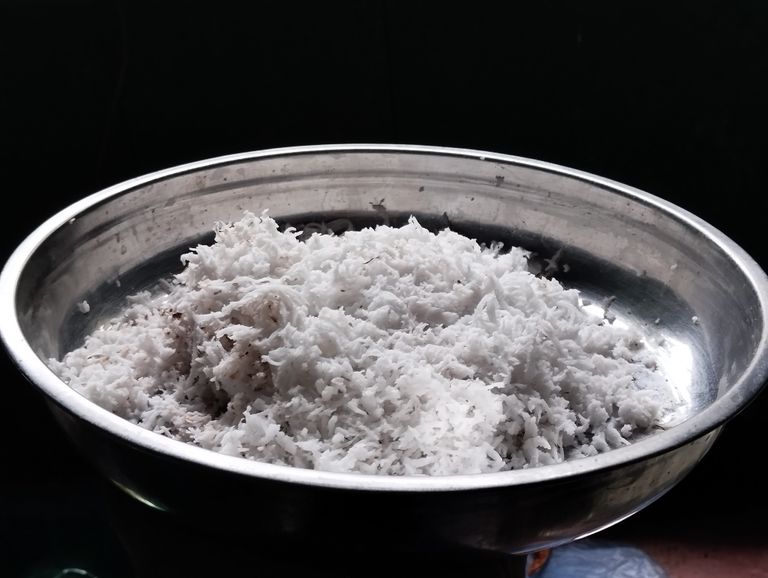
Congratulations, your post has been upvoted by @dsc-r2cornell, which is the curating account for @R2cornell's Discord Community.
Enhorabuena, su "post" ha sido "up-voted" por @dsc-r2cornell, que es la "cuenta curating" de la Comunidad de la Discordia de @R2cornell.
Telegram and Whatsapp